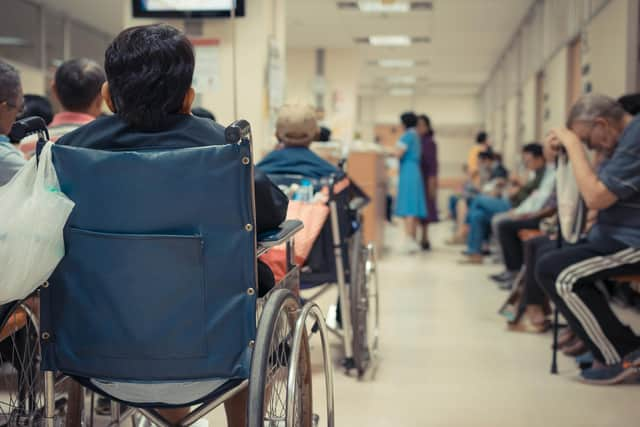Trolley waits: Nearly one third of Leeds hospital patients waiting over 12 hours in A&E to be seen
and live on Freeview channel 276
Analysis of NHS data by NationalWorld has shown that the percentage of patients waiting at hospitals run by Leeds Teaching Hospitals NHS Trust – which includes Leeds General Infirmary and St James’s Hospital – for over 12 hours increased twentyfold from 1.5% in December 2021 to 30.2% in December 2022.
The actual number of patients in Leeds increased to 1,134 out of 3,260 people who were admitted from A&E after waiting over 12 hours last month from 63 out of 4,134 in the same month the previous year.
Advertisement
Hide AdAdvertisement
Hide AdThe percentage in Leeds was more than double the national average according to the data, which showed that one in seven patients (14%) admitted to hospital through A&E last December endured waits of over 12 hours for a bed (so-called trolley waits) once medics decided they needed to be admitted. They could have been left languishing on trolleys or chairs in corridors while waiting for a bed or operating theatre to become free.


Professor Phil Wood, Chief Medical Officer and Deputy Chief Executive, at Leeds Teaching Hospitals NHS Trust, said: “Across the country the NHS has been facing higher pressures than ever before, and this is true in Leeds too. In 2022, particularly towards the end of the year, there was an increase in our Emergency Department attendances from people who were really unwell and needed our specialist care.
“This meant it was harder for our teams to see patients as quickly as we aim to, despite our ambulance handover times remaining as some of the fastest in the country.”
He said that trust will continue working “to safely discharge patients who no longer need treatment” and urged those feeling unwell not to be put off by the figures and continue to reach out for help if they need it.
Advertisement
Hide AdAdvertisement
Hide AdThe worst case across the country was at the East Cheshire NHS Trust, where 60% of its 1,005 patients were left facing trolley waits of over 12 hours.
The figures include all those admitted after attending A&E, whether of their own accord or by ambulance. Not everybody who attends A&E needs to be admitted.
The Royal College of Emergency Medicine (RCEM) president, Dr Adrian Boyle, labelled December’s emergency admission figures as “truly shocking” and called on the government to show that it is hearing the pleas of the NHS, adding: “How far does emergency department performance need to fall for this to lead to meaningful action?”
Dr Den Langhor, emergency medicine lead for the British Medical Association (BMA), said the figures highlighted the enormous pressure emergency departments are under, describing the situation across many of the country’s A&Es as “intolerable, unsafe, and unsustainable”.
The RCEM recently estimated that between 300 and 500 people were dying every week as a result of delays in emergency care – figures the government has disputed – while last week it was revealed how northern and midlands regions were suffering particularly high levels of excess deaths over Christmas.
A spokesperson for the Department of Health and Social Care said the government is “fully committed to supporting our incredible NHS” and is making up to £14.1 billion available for health and social care over the next two years on top of record funding.
Advertisement
Hide AdAdvertisement
Hide Ad“We recognise the pressures the NHS is facing so announced up to £250 million of additional funding to immediately help reduce hospital bed occupancy, alleviate pressures on A&E and unlock much-needed ambulance handovers,” they said.
“This is on top of the £500 million Discharge Fund to speed up the safe discharge of patients and rolling out virtual wards to free up hospital beds and cut waiting times.”